Misfah Old House, Misfat Al-Abriyeen, Oman
Misfah Old House – Misfat Al-Abriyeen village
The Hajar Mountains are the highest in Oman. Their roughness relief and mighty summits stretch in an arch across the whole peninsula. But this doesn’t mean you won’t find abundant plantations, farms, and traditional villages right at the foot of the mountains. At the heart of the Hajar mountain range, Misfat Al-Abriyeen is a mountainous village located 900m above sea level. It stands deep within the foothills surrounding Jebel Shams (3028m) – the highest peak in Oman, and the Arabian Gulf countries as well.
You will reach Misfat Al-Abriyeen through an uphill zigzagged road, paved all way to the village entrance. Camouflaged into the dark rocks and crags, the village was built into the rock of the mountainside as an extension of nature. Being there, you have the feeling as if the oasis village has grown naturally out of the rugged, untouched scenery itself. Lush vegetation booms in stark contrast with the seemingly arid surrounding mountain slopes, turning the village into a small paradise.
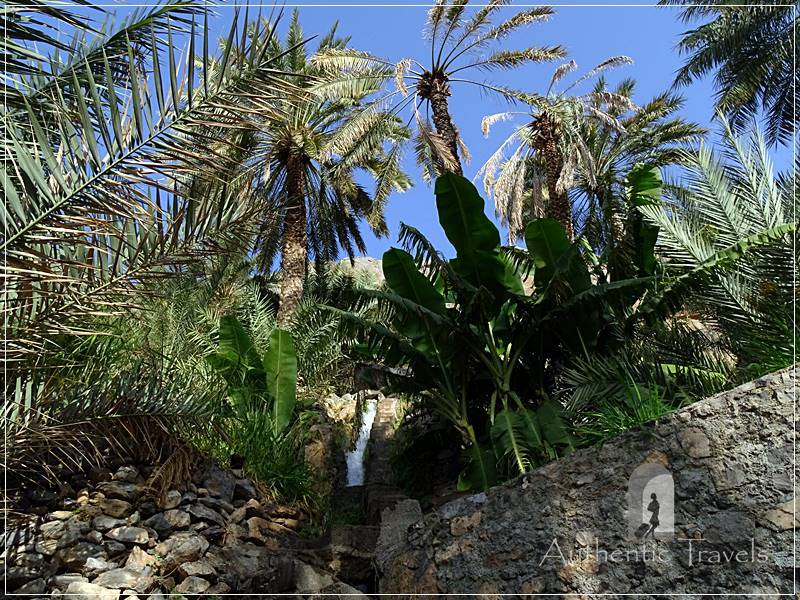


Misfat Al-Abriyeen was nominated as one of the best tourism villages by UNWTO. In brief, it’s notable both for its traditional agricultural farms and old architecture. The village boasts steeply descending plantation fields, agricultural terraces, and a labyrinth of palm-shaded alleys. It also features picturesque clustered houses with stone archways built on top of solid rocks. In addition, a maze of narrow passageways flanked by two-story dwellings prevents cars from entering the village, thus making it more authentic and close to its traditions.
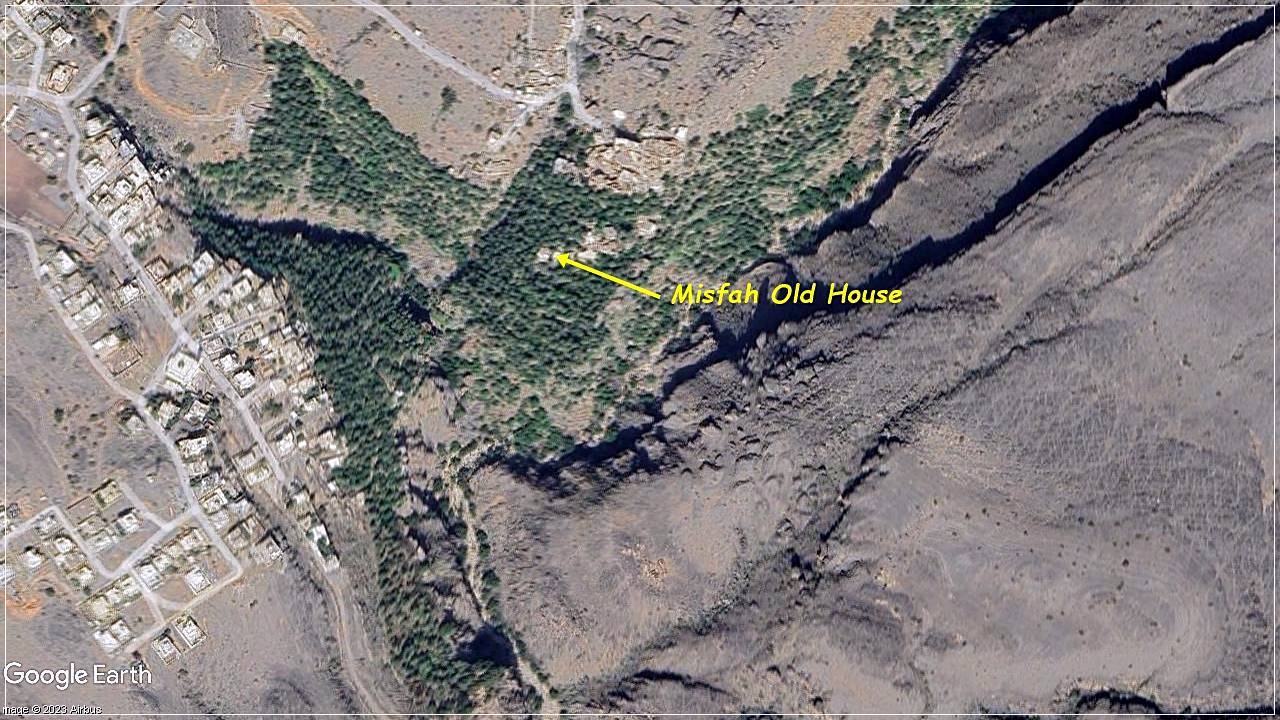
Park your car on the rim of the old village. Then start to climb down through the narrow alleyways and the edge of the plantations. The Misfah Old House sign will easily guide you from the parking lot through the labyrinth footpaths in the village and amidst the farm plantations. When you think you’ve missed the way and nothing else could be there, an old house made of stone and mud arises amidst the plantations. Several minutes later, you’ll take a rest in the welcoming majlis for guests. You’ll sip on an Omani coffee and try to figure out the difference between the many kinds of dates you’re tasting.
Misfah Old House – The History
Misfat Al-Abriyeen derives its name from the Al-Abri tribe – one of the two tribes in the village (Al-Abri and Al-Hatali). The Al-Abri tribe was the most numerous one. In the beginning, the old families in the tribe used to live together. More generations (four to five families) shared the same building in the center of the old village. Parents and all brothers with their wives lived together in the same house. As a result, each family had only one room.

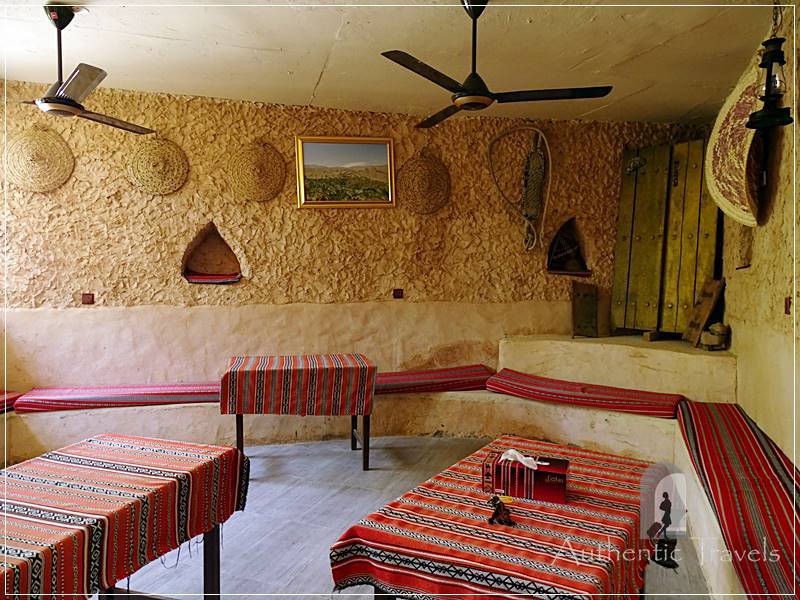

After working in petrol jobs in Kuwait or Bahrain, some of the young Al-Abri members built new houses on the village outskirts. For instance, 150 years ago, the great-grandfather Zaher left his family’s house in the old village. He then built a new house on the outskirts of the village, amidst palm trees. Vast farms surrounded the new house and Zaher’s family harvested dates for a living. Before, they used to live only from farming. But 50 years ago, Uncle Ahmed studied heritage and tourism at Sultan Qaboos University in Muscat. He suggested refurbishing the old family house of great-grandfather Zaher and grandfather Mohammed. His idea was accepted and they transformed the old house into a heritage guesthouse.

At the present time, Misfah Old House proudly stands as the first heritage inn in Oman. It also is the first (and the oldest) guesthouse in Misfat Al-Abriyeen village. The main idea of the project is to sell something unique, not only hotel rooms. Guests stay in an Omani house, live Omani life, and eat food from the local houses. “We are not selling rooms, we are selling experiences”, says Yakoob Al-Abri – the current marketing manager of the guesthouse.
Misfah Old House – Architectural Design
The old houses in Misfat village are made of local stone covered with mud, palm frond roofs, and middle-sized windows with massive wooden shutters. When the great-grandfather Zaher built his house among palm trees, he respected these local traditions and construction techniques. Also, neighbors’ houses respected these architectural features and the traditional look.



In 2009, Misfah Old House started with five rooms with a shared bathroom on the ground floor of the main house. These rooms feature authentic decors with atmospheric wall niches, discreet lighting, and traditional palm leaves-weaved objects. Also, carpets with red as the dominant color bring joy and functionality to the private spaces of the rooms.
At this point, the main house is the central part of Misfah Old House. It comprises an open room for welcoming guests (the traditional majlis) at the entrance. Sitting terraces open onto the lush plantations, and connect the interior space to nature. Meals are served on the upper terrace, with a wide view of the palm trees, farms, and the new Misfat village.
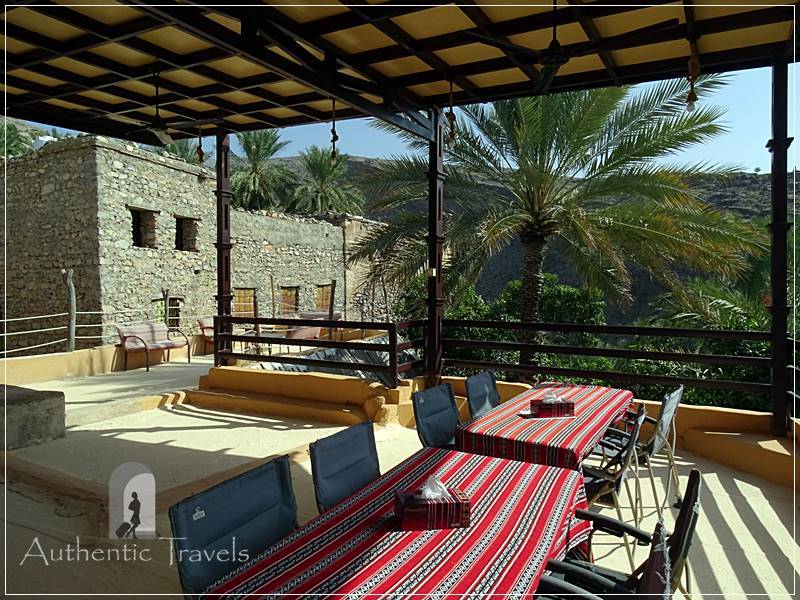


When the guesthouse needed an extension, the managing Al-Abri family bought two more old houses from their neighbors. They refurbished the houses into 12 new, spacious en-suite rooms. These rooms have large balconies with in-depth views of the lush green plantations. In addition, massive wooden shutters, thick palm trunks, and even geometric ornaments imprinted in mud plaster embellish the interior and create an authentic sense of place.



Even though Misfah Old House has expanded gradually, the local materials and traditional decors create a sense of unity in all its three compounding buildings. The in-between palm trees and shaded walkways connect the three houses and strengthen this sense of unity. Also, the modest volumes that cannot be seen from afar integrate Misfah Old House into nature. You have no idea what surprise awaits you when you walk through the plantations. All of a sudden, you discover this unique place – the place where you will sleep, perfectly integrated into nature.

Misfah Old House – Traditional Lifestyle and Local Customs
In Misfat Al-Abriyeen, many villagers rely on agricultural terraces for their livelihood. To these days, they do farming the same way they did in the past. In the beginning, they had lime trees too. But in 1990, bacteria attacked them and they lost almost 99% of the lime trees. At this time, they have dates, mangoes, bananas, pomegranates, and papayas, and in winter, tomatoes and potatoes. If this doesn’t sound too much, then think that they harvest dates from 70 types of 150 existing over the world. Dates have different forms, sizes, colors, and tastes, and you can taste different types at Misfah Old House, paired with a cup of Omani coffee.

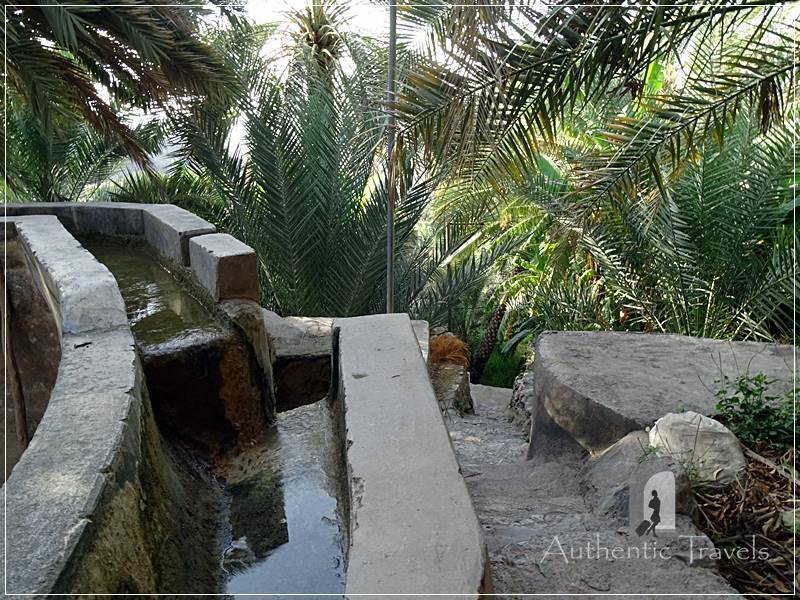

The self-sustaining community in the village has based itself on the ancient irrigation system (falaj) for at least 2000 years. That is to say, a mountain spring on the edge of the village is the source for the intricate falaj canals (UNESCO listed). Carved into the hard rocks of the mountain, these canals bring water to the agricultural terraces on the mountain slopes. From Misfah Old House, follow the hiking trails marked with red-yellow-and-white stripes that take you along the falaj canals. You’ll reach remote corners of the plantations, crossing steep valleys (wadis) and agricultural terraces. This way, one learns about life among date palms, terraces of crops, and life in an Omani traditional community.
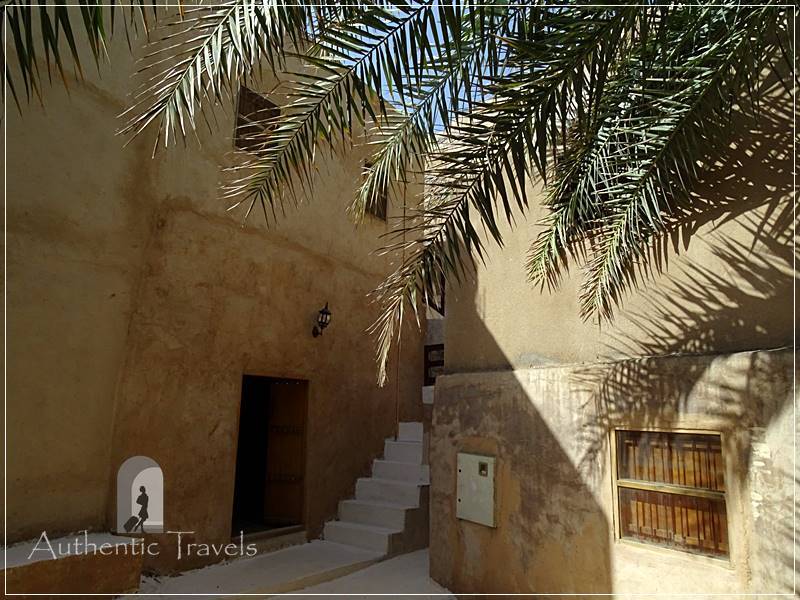
Through tourism and heritage-led initiatives, Misfah Old House provides not only a well-deserved overnight stop but also experiences of local rural values. These include food and beverages supplied by the local community, cultural walks in the village, and farming and harvest of dates. In essence, witnessing life within the community is a more authentic way to immerse in the local customs and traditions.
Misfah Old House – Personal Experience
From the moment I found out about Misfah Old House, I knew it would be a unique experience to stay in this place. My experience started from the moment I parked the car at the entrance of the village and crossed the old village on foot. It might be uncomfortable to carry your luggage, but the deeper you go into the plantations, the more you feel you enter a different world. When I reached the heritage inn after 10 minutes of walking, I felt disconnected from the outside world, relaxed, and excited to find a new lifestyle.



In particular, I loved the geometrical mud-imprinted ornaments in my room. I would have looked at the palm trees from my balcony for hours. At the same time, I also enjoyed the darkness created by the massive wooden shutters that helped me to have a profound and restful sleep. In the morning, I sat doing nothing on the breakfast terrace for one hour. This revealed to me the hidden sounds of nature, the blessing of the shade, and the remoteness of the place. Not only that I connected to the energy of place and nature, but I also connected deep within myself. After a long and agitated travel, I admitted how much I needed a restorative place to recharge myself.
Misfah Old House is more than a guesthouse with rooms for rent, and even more than a heritage inn. In fact, it is a place where time stops and you travel into the depth of your inner being. It is a place where you meet the secrets of the local lifestyle and immerse in the lively traditions.
Misfah Old House can be found on their website.
Some more photos from Misfah Old House, Misfat Al-Abriyeen village (Al Hamra, Oman):




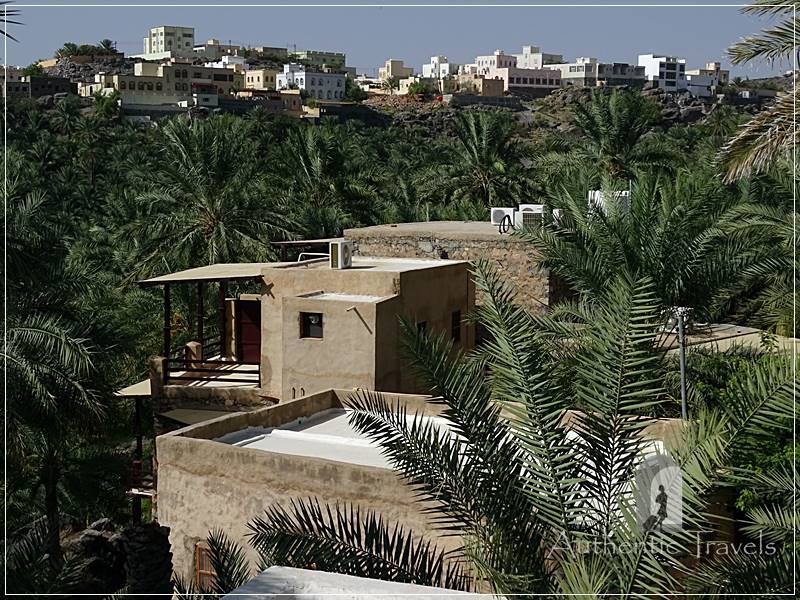



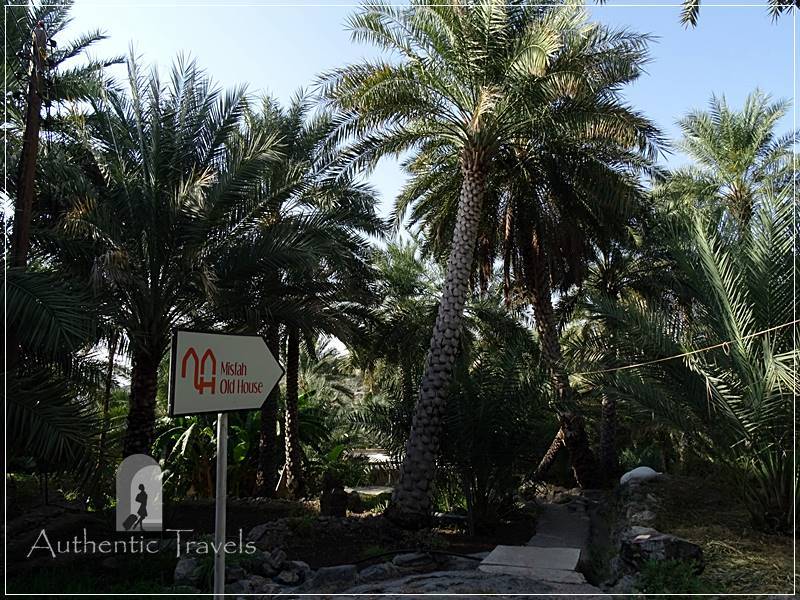
Absolutely amazing guest house!
I like the idea of selling an experience, and not just rooms. The house is beautiful and I can imagine that because it is so secluded, it offers so much peace and quiet. The decor of the house is so beautiful, with all those traditional motifs and typical objects. The views from the terraces, over the green plantations, are so pretty!
It is a great place to stay in nature, like decades ago – amidst the palm trees
Experiencing authentic local customs like date harvesting and falaj irrigation canals must have been special. Likewise, I appreciate you explaining the larger context of how tourism initiatives like Misfah Old House support the community. Misfah Old House is a truly restorative, one-of-a-kind place,it isn’t just accommodation but an immersive experience.
This are some of the few reasons why I chose to write about this experience. I am happy you liked it and next time, don’t forget to stay at Misfah old house.
We visited Oman twice but only as day trips on a cruise. We sadly did not get time to head into the Hajar Mountains to see spots like the Misfah Old House. It would have been interesting to see traditional agricultural farms and old architecture. I can see why it was recognized by UNWATO. Fascinating to see that the Old House maintained a sense of unity over many renovations. A very interesting choice for a place to stay.
I am so happy you liked it. Hopefully, next time, you will take a larger detour to see Oman’s villages too.
Your writing style is so engaging. I loved the feel of the place, your pictures took me on a virtual tour. I hope that one day, I see this heritage house, experience the rural food and set-up. The structure and the palms do make it so inviting and the hosts appear to be really hospitable. I like remote locations, as they give you a chance to recover from all that you need to heal from.
I love staying at traditional houses like Misfah Old House in Oman. It seems to be situated in such a lovely and peaceful setting. A huge plus is of course the possibility to learn about the way of life and the farming methods of the villagers. I will save this for the future.
Discovering Misfah Old House through your blog ignited my wanderlust! Oman’s Hajar Mountains and Misfat Al-Abriyeen village seem like a hidden gem. The village, seamlessly integrated into the mountains, reflects Omani heritage beautifully. Your vivid descriptions painted a picture of lush plantations, stone houses, and the charm of Misfah Old House. The transformation of ancestral homes into a heritage inn is a captivating journey. Your personal experience adds a touch of authenticity, making it more than just a guesthouse. Thanks for sharing this unique Omani retreat, showcasing a world where time stands still, and travelers immerse in cultural richness.
I was truly impressed with Oman on our stop with the cruise ship. It whetted my appetite to know more about this country. I can totally see a stay in the Misfah old house as part of a longer trip there at the foothills of the mountains. It is nice to experience Oman this way – the heritage house deep in the mountains surrounded by plantations is definitely on my list.
What a great idea to transform the old house into a heritage guesthouse and yes, their selling point is indeed the experience. I have no idea about the Omani life but it would be wonderful to experience it first-hand even for just a few days. Thank you for sharing your experience.